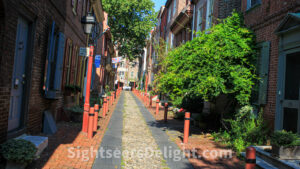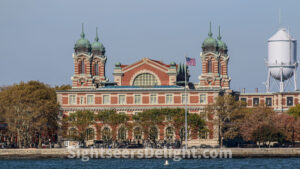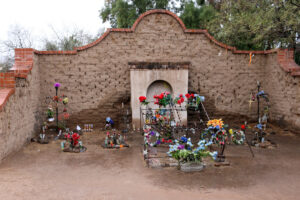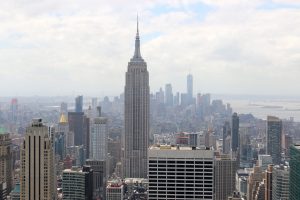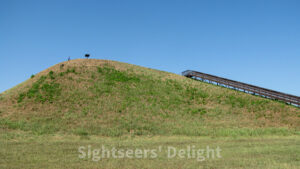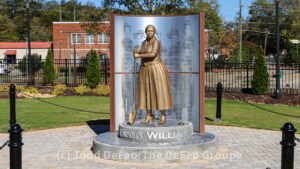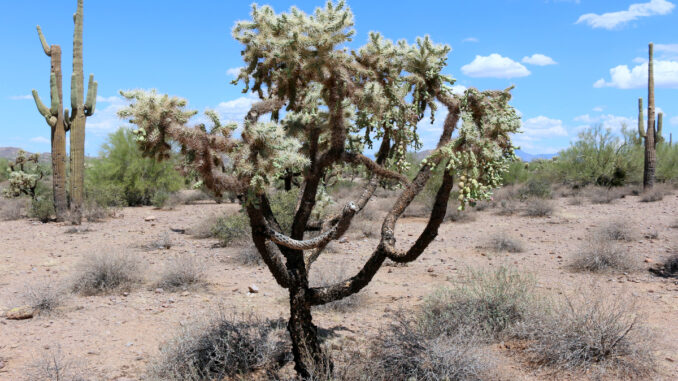
Guidebooks are annoying. Just because some editor who doesn’t know me tells me which restaurant is the best or what attraction is a must-see doesn’t make it a must-see attraction. Sightseers’ Delight is dedicated to the weird, the quirky and the fun. After all, traveling is fun.
If it’s not, you’re doing it wrong.
All of the places highlighted in this ever-growing database are great. Sightseers’ Delight has visited them all. We think you should make a point to see every one of them. But, this is not a guidebook. Just a webpage to help you plan your next adventure.
For millions of immigrants, Ellis Island was the first view of America. Today, it is a moving experience for anyone wanting to learn more about that era in U.S. history. The island, part of Statue of Liberty National Monument, sits in the shadow of the Statue of Liberty. Though quiet today, it’s amazing to think of what the Great Hall was like as new arrivals to the country passed through in search of a better life here.
El Tiradito is a famous shrine in the Old Barrio section of Tucson. The memorial is said to be the only Catholic shrine in the country “dedicated to a sinner buried in unconsecrated ground.” According to one version of the legend, the monument honors Juan Oliveras, an 18-year-old ranch hand who had an affair with his mother-in-law. His father-in-law subsequently killed Oliveras. The original shrine dates to 1870, but the current version dates to 1920s. The shrine is said to exemplify Sonoran Catholicism, a blending of Catholic doctrine with local customs. The National Register of Historic Places added it to its list in 1971.
85701
The Empire State Building is arguably the most iconic representation of Gotham City. The 102-story-tall skyscraper was built in 1930-31 and opened on May 1, 1931. It was the tallest man-made structure in the world until 1954 and today is the second-tallest skyscraper in New York and the fifth-tallest completed in the country. The view from the observation deck is awesome, to say the least.
Located on the north shore of the Etowah River and south of modern-day Cartersville, the mounds were inhabited from 1000 to 1550 by Muskogean Native Americans of the Mississippian culture, so named because the culture originated along the banks of the Mississippi River. Designated a National Historic Landmark in the 1960s, this 54-acre state park includes a museum with artifacts discovered at the site, six mounds the natives built, and a number of other related sites. The now 1,000-year-old Native American town is generally believed to be a city Hernando de Soto visited in 1540 when he was exploring the area. By that time, according to historians, the civilization was in decline and the Etowah Indian Mounds may have been abandoned.
30120
Everglades National Park was dedicated in Everglades City, Florida, on Dec. 6, 1947. It is famous for its unique ecosystem: wetlands, sawgrass marshes, cypress swamps, and mangrove forests. It is home to a diverse array of plant and animal species, including endangered species like the Florida panther and the manatee and rare species like the American crocodile. Visitors can explore the park’s many hiking trails, canoe and kayak along its waterways, take an airboat tour, or participate in ranger-led programs and educational activities. The park is also a popular destination for birdwatching, fishing, and camping.
This post incorporates text generated with GPT-3, OpenAI’s large-scale language-generation model.
33034
Faneuil Hall, a meeting hall and marketplace since 1743, is best known as the site of speeches by Samuel Adams and others. The historic building, often called “the Cradle of Liberty,” is part of Boston National Historical Park and a favorite stop on the Freedom Trail. Peter Faneuil, a wealthy merchant, slave trader and philanthropist built Faneuil Hall and donated the edifice to Boston.
02109
Fenway Park is a historic baseball stadium located in Boston, Massachusetts. It is the oldest ballpark in Major League Baseball and is known for its unique features, such as the Green Monster, a 37-foot tall left-field wall. Fenway Park opened in 1912 and has hosted countless iconic moments in baseball history.
02215
The Fernandina Beach Marine Welcome Center & Shrimping Museum gives visitors to Amelia Island a quick overview of the shrimping industry and its impact on the region. The Amelia Island Museum of History began running the museum after the city of Fernandina Beach approached the museum in 2010. The small museum, located on the waterfront in downtown Fernandina Beach, includes information about the shrimping industry and the families who played a vital role in its development. Theor efforts helped make the state “the birthplace of the modern shrimping industry.”
32034

